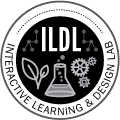SimSnap: Orchestrating Collaborative Learning in Biology through Reconfigurable Simulations
SimSnap allows students to "snap" iPads together while they work on simulations in science. The main goal of this project is to develop an innovative platform to integrate learning across individual, group and whole class levels with innovative uses of technology. Students will solve socio-scientific problems in biology, as they seamlessly move between their own learning and that of their peers.Key aspects of this project are:Students will be able to investigate the biology of plants in an authentic simulation focused around community garden…


